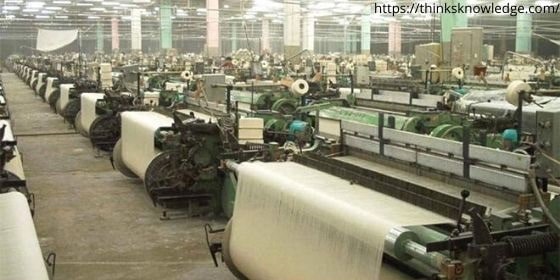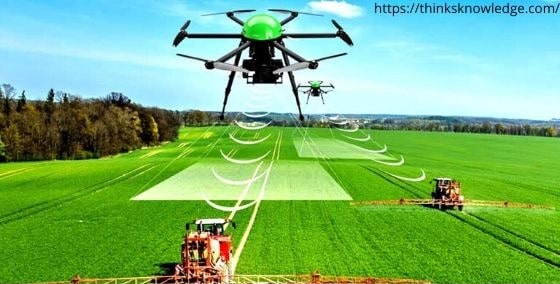Agricultural based industries conform to the notion of competitive advantage within and outside the country. They can act as a protective shield to provide employment to surplus rural labor and solve the problem of large scale unemployment / disguised employment in rural areas. The real challenge here is how effectively the government implements it’s planned and policy. Agriculture Based Industries in India ensures a holistic development in rural areas without undermining the identity of its socio-economic structure, agricultural production system, and basic agricultural manufacturing characteristics.

Table of Content
GLANCE IN INDIAN PERSPECTIVE
The economic policies of developing nations have always advocated increasing farmers’ incomes, not only product and productivity growth but also through systemic value-addition in agricultural products through processing and manufacturing. The vast population of India is still engaged in agriculture and allied activities. Indian farmers are largely worked in unorganized.
Indian farmers are depending on external or third parties agencies to dispose of their marketable surplus. Due to a lack of capital assets in rural areas, they are forced to sell their produce to middlemen/commission agents. Due to low-income Agriculture Based Industries in India production and profitability of agriculture have declined sharply and agricultural work is now under severe pressure.
INDUSTRIAL SCENARIO IN RURAL AND URBAN INDIA
Agriculture Based Industries in India data of organized manufacturing units reported in the annual survey of the Central Statistical Organization shows that in 2017-18. The number of factories in rural areas was less than in urban areas. However, there was a similarity in terms of their total production and net added value in the region. This suggests that the establishment of more rural industrial units will not only play an important role in providing employment to the rural surplus labor but will also contribute in a big way to the total industrial production and value addition.
AGRICULTURE BASED INDUSTRIES
The development of agro-based industries in rural areas and around them has the potential to make agriculture acceptable and attractive and provide stability. The Agriculture Based Industries in India is universal expressions in which various industrial. Manufacturing activities consist of agriculturally include those activities and services that are derived from agriculture as inputs.
Agriculture and industry complement each other due to their interdependence and mutual relations in the development process of any developing nation. Agriculture Based Industries in India provides inputs to industry and industrial production is used in agriculture to expand its production and productivity base. Thus, the agricultural industry not only includes activities utilizing raw materials derived from agriculture but also includes those that also provide inputs for modern agribusiness.
TYPES OF AGRICULTURE BASED INDUSTRIES
Due to input-output contracting and agriculture and the industry is based on each other, agricultural industries can be of two types:
- Processing industry or agro-based industry and,
- Input supply industry or agricultural industry.
Thus, agencies designed for primary sector production and productivity growth and supporting agriculture through manufacturing inputs are called ‘agricultural industries’. Agriculture Based Industries in India process and value add agricultural resources in which land and along with trees, plants, fruits, and vegetables, etc., their day-to-day tasks include useful livestock. According to the International Standard Industrial Classification Framework, Agriculture Based Industries in India includes manufacturing/processing of food and beverage, textiles, footwear and apparel, leather, rubber, paper, and wood, tobacco products.
Why Promote Agriculture Based Industries?
India has the world’s 10th largest arable land, 20 agro-climatic zones, and 15 major climates. Census data shows that the total number of farmers in the country has decreased from 12.73 crores to 11.88 crores farmers in the year 2001. This may be due to the highly product-oriented Indian agriculture without adequate focus on value-addition, wastage reduction, and incremental income through agro-processing and manufacturing of Agriculture Based Industries in India.
Indian Council of Agricultural Research
The Central Institute of Post Harvest Engineering and Technology of the Indian Council of Agricultural Research has in its 2015 report titled ‘Estimation of Commodities and Major Crops in India and Quantitative Losses after Harvesting’. According to the report, the loss of post-harvest and post-harvest loss of agricultural commodities is 4.65-5.99 percent for cereals, 6.36-8.41 percent for pulses, 3.08-9.96 percent for oilseeds, 6.7-15.88 percent for fruits and 4.58- for vegetables. 12.44 percent.
The total estimated economic value of the quantitative loss was found to be Rs 9651 crore at 2014 average annual prices. Thus, the need of the hour is to reduce losses to a great extent. Agriculture Based Industries in India promote and adopt modern agro-processing technology and to establish a large number of agricultural industries in rural areas.
This is the right opportunity for the overall development of the agricultural economy as hardly 2 to 3 percent of agricultural commodities are processed. Keeping in mind the current depletion scenario in Agriculture Based Industries in India. It is necessary to invest in rural areas to develop suitable infrastructure and to set up modern agro-based industries in and around rural areas. To focus and attract private-public participation for the future growth in Agriculture Based Industries in India.
CHARACTERISTICS OF AGRICULTURE BASED INDUSTRIES
Agro-based industries in India can be divided into three categories:
- Agro-processing units covering fruit and vegetable processing units, dairy plants, rice mills, pulses mills, etc.;
- Agricultural manufacturing units incorporating sugar, dairy, bakery, solvent extraction, textile units, etc.;
- Agriculture input manufacturing units covering mechanization of agriculture, agricultural implements, seed industry, irrigation equipment, fertilizers, pesticides, etc.
Rural and agro-based industries help in generating employment opportunities in production, distribution, manufacturing, and marketing. In the year 2017-18, 45.3 percent of the agriculture-based industries shared only 24.1 percent for total net worth enhancement, even though 44.2 percent of the total workforce was engaged in this sector.
This suggests that the agro-based industrial scenario has not fully redeemed the benefits of permanently available resources and efforts made by the government through various subsidy oriented central schemes. There were a total of 1.07 lakh Agriculture Based Industries in India units in the year 2017-18.
Companies manufacturing food products and beverages account for 38 percent of the total number of agricultural industries and 36.8 percent of the total net worth. Agro-based industries have a great potential to make Agriculture Based Industries in India more visible and hard-working by identifying easy issues and resolving them in a timely manner.
REVIEW OF SELECTED GOVERNMENT INITIATIVES
1. Food Processing and Beverages
The Ministry of Food Processing Industries implements various central sector schemes to promote food processing industries and value addition activities. It has recently restructured its schemes under the new Central Sector Scheme-Pradhan Mantri Kisan Sampada Yojana (PMKSY) with an allocation of Rs 6,000 crore for the period 2016-20.
The following components have been installed in the scheme:-
- Mega Food Park
- Integrated Cold Chain and Value Added Infrastructure
- Food Safety and Quality Assurance Infrastructure
- Human Resource Development and Institutions.
Pradhan Mantri Kisan Sampada Yojana (PMKSY)
The Pradhan Mantri Kisan Sampada Yojana (PMKSY) includes three new schemes creation/expansion of food processing and preservation capacity. The objective of building infrastructure, manufacturing, and marketing facilities for agro-processing groups and strong modern infrastructure along the entire value chain in setting up food processing/preservation units.
Components of Pradhan Mantri Kisan Sampada Yojana (PMKSY) such as the construction of integrated cold chain and value addition infrastructure and manufacturing and marketing facilities Agriculture Based Industries in India. Reducing agricultural production harvesting and post-harvest losses and ensuring hard-earned income and adequate employment in the rural non-farm sector is very important to do.
2. TEXTILE INDUSTRY
The textile industry is considered highly employable. It provides employment to 4.5 crore people directly and another 6 crore people in allied sectors. A large number of women and rural populations including Agriculture Based Industries in India. The Indian cotton textile industry is largely unorganized and suffers from high production and labor costs. Other important issues of the industry are outdated machinery, quality of raw materials, and lack of proper level for value-added cotton products in domestic and international markets.

With a view to making the textile industry globally competitive, promoting exports and facilitating modernization, the government has taken several planned initiatives such as Plan for Integrated Textile Park Integrated Processing Development Plan, Grouped Action Plan, Common Facility Center and Modified Technology Upgradation Fund Scheme, Scheme for Development of Powerloom Sector (Power-Techs), Capacity-building scheme in Samarth-Textile Industry Sector, Comprehensive Handloom, Group Development Scheme, State and Central Tax and Levy Exemption, etc.
3. JUTE INDUSTRY
The installed capacity of the jute industry in India is 16.5 lakh MT, of which 11.5 lakh MT is produced. Such additional capacity has been attempted in marketing and bringing in modern technology and equipment Agriculture Based Industries in India. The National Jute Board provides capital funding to jute mills to address their issues and challenges, among other things, through planned interventions, and inter alia.
4. KHADI AND VILLAGE INDUSTRIES
The Khadi and Village Industries Commission of the Ministry of Micro, Small and Medium Enterprises in the country promotes the establishment of various post-harvest Agriculture Based Industries in India and food-based micro-industries such as processing of pulses and cereals, fruits and vegetables, rural oil industries, bread baking, etc. Through the Prime Minister’s Employment Generation Program, the Khadi and Village Industries Commission seeks to create self-employment opportunities through the establishment of micro-enterprises in the non-agricultural sector, which inter alia includes
- Agro-based and food processing industries.
- Forest-based industries
- Handmade paper and
- Fiber/textile industries.
5. ANIMAL HUSBANDRY, DAIRY, AND FISHERIES
Keeping in view the employment and income-generating capacity, the government implements various schemes Agriculture Based Industries in India. Such as the Dairy Entrepreneurship Development Scheme, Dairy Processors, and Infrastructure Development Fund, Integration of Dairy Cooperative Societies and Farmer Producer Organizations in Dairy Activities, Integrated Development, and Management and Fisheries to promote agro-based industries in this sub-region. Incorporation of Farming and Fisheries Infrastructure Development Fund.
REVIEW OF AGRO-BASED INDUSTRY ISSUES AND PROBLEMS
The agro-based industrial sector remains underdeveloped despite its high potential to ensure equal income and employment opportunities in rural areas. A review of available information indicates that pending issues of Agriculture Based Industries in India have to be addressed, such as concerns related to finance, industrial policy, research and development, infrastructure marketing, production, and human resources. These are the problems and the major issues related to Agriculture Based Industries in India.

CONCLUSION
Indian planners and policymakers have always encouraged rural and agricultural industrialization. The inherent advantages of agricultural industries are the optimum utilization of local agricultural resources, mobilization of large scale investment, creation of employment opportunities, prevention of critical rural-urban migration, and reduction of inequality in areas. These industries have the potential to present a comprehensive, reliable, and sustainable model for promotional/profitable business, activity diversification in villages. This industry is not beyond issues and challenges. The government is trying to ensure state-of-the-art agro-industrial infrastructure through innovative efforts like various central schemes Make-in-India, Startup India.
The Agriculture Based Industries in India is in line with the notion of competitive advantage within and outside the country. They can play the role of a protective shield to provide employment to surplus rural labor and solve the problem of mass unemployment / disguised employment in rural areas. The real challenge here is how effectively the government implements its planned and policy interventions to ensure holistic industrial development in rural areas without undermining the identity of its socio-economic structure, agricultural production system, and basic agricultural manufacturing characteristics.





